27 Golf Backyard Putting Green Ideas
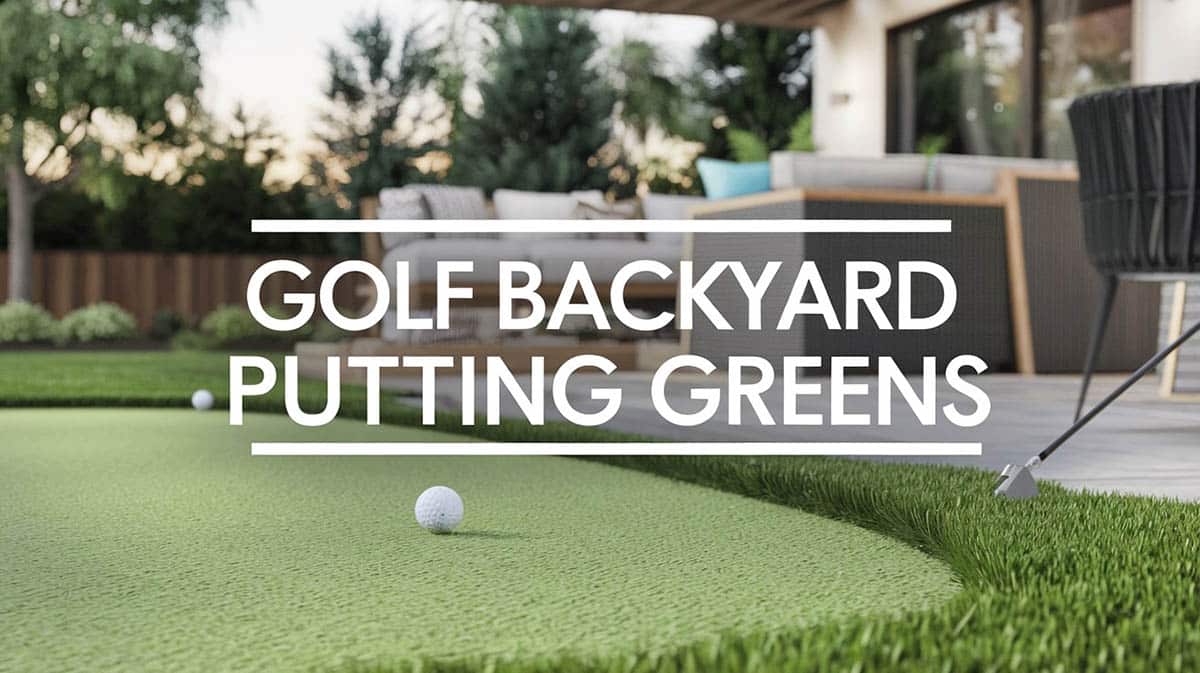
A golf backyard putting green is a great way to practice the sport from the comfort of your own home. A putting green can be constructed in your backyard that will provide hours of enjoyment as well as increase your house’s resale value. Golfers looking to have some practice putting greens installed in the backyard may also still want beautiful aesthetics for their landscaping. Designating a portion of your yard for a place to play might seem to limit your design options, yet the remaining space still offers plenty of opportunity for creative landscaping, like in the example above that uses bright flower beds located right next to the greens. This is one of the key points of good design.
When considering the type of materials needed for creating your golf green, there are generally two choices: natural grass or synthetic turf. Most experts don’t recommend natural grass for golfers due to the time commitments involved in maintaining it. However, natural sod can be much less expensive than synthetic turf. You can find sod that you install yourself for around .50 a ft. Another downside is that living in an area with many cold months may require you to regrow grass every year. You will also be limited in the times of the year when you can use it for golfing.
On the other hand, synthetic turf is durable, long lasting, and requires no daily maintenance. Synthetic turf offers you year-round use by not being affected by extremes in hot or cold weather. The convenience factor is one of the main selling points of choosing synthetic turf. The cost for synthetic grass can run from around $5 a ft on up to $25, depending on the quality you select and whether you will install the turf yourself.
How to Build a Backyard Putting Green
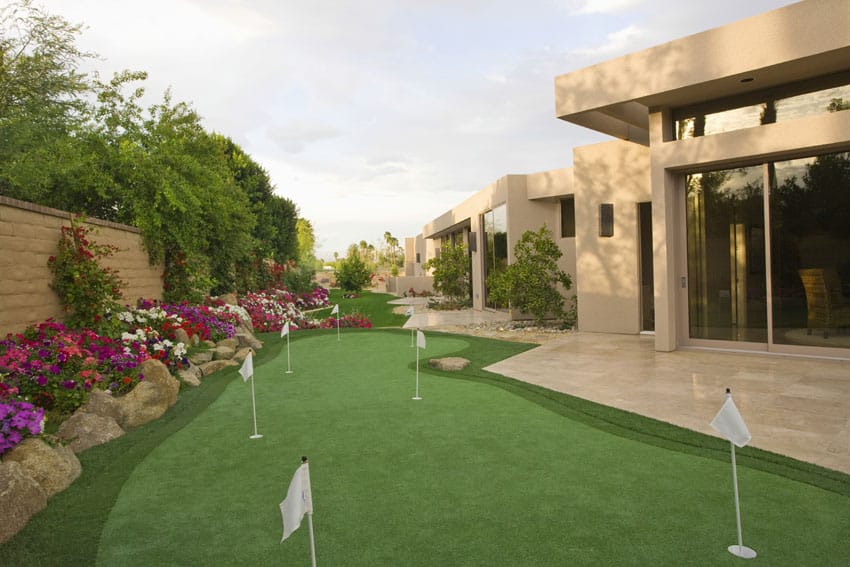
Avid golfers and hobbyists will love their own putting green turf in their backyard. A personal green makes it immensely easier to practice putting during lazy Sundays at home or whenever the sun is out, and there’s spare time to kill. Using the appropriate tools and construction materials, building up a personal putting green to incorporate into your backyard’s landscaping will be fairly straightforward and even fun.
The first step is to lay the base materials. This is an important part of the building since it helps stabilize the earth, which is important, especially for less than stellar ground conditions (e.g. flood-prone backyards). The finer the grain size of the gravel, the better it will be for stabilization. Using a plate compactor, compact the laid-out gravel; this shouldn’t be more than an hour or so.
The second step is to add the geotextile fabric covering. This is rolled over the entire gravel bed to stabilize the green as well as to prevent any unwanted weeds from sprouting into the panels.
The third step is to install the pre-cut designer green panels. This is a matter of following the instructions with regard to laying out all the parts. This part is a little bit like assembling a large puzzle, albeit a lot more forceful. Full-length screws are placed around the perimeter edge to secure the assembly. Apply some stone dust or fine gravel to the outer edge and compact them for an even firmer outer edge. Clean and prep the panels for the turf installation.
Applying the turf comes fourth and this comes with the main turf roll and the fringe turfs. After unrolling the main turf, give it some time to rest under the sun to eliminate any wrinkles and kinks. Lay it on top of the panels, install the pre-made cups (holes), and then stretch and secure the turf to the panels with a pneumatic staple gun.
Apply the turf fringes up against the putting curve edges and secure them with the staple gun – be sure to have a good fit, especially along the seams. Use a carpet steam roller to make the stapling less evident and then roll the edge of the turf over the edge of the panels and staple them in. After that, it’s a matter of clean-up and final landscaping works and then it’s ready to use the new outdoor putting green.
Home Golfing Greens
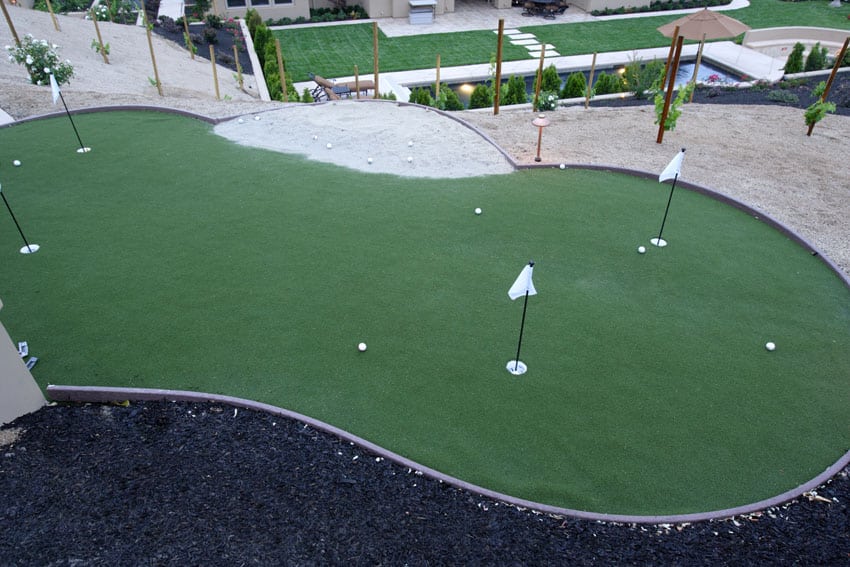
This four-hole green has a very simple symmetrical layout for optimal putting practice and leisure playing. The side of the turf has a makeshift mini sand trap, a creative choice that helps hold any unused spare balls in place without fear of them rolling away.
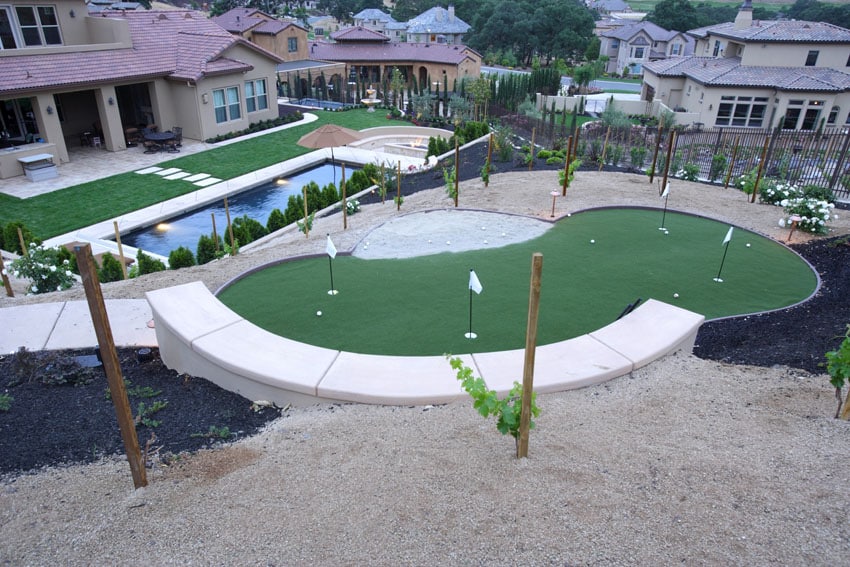
This view of the putting green shows its placement on higher ground from the rest of the surrounding neighboring backyards. A long stone bench is built into one of the edges of the green for lounging on. A good view also greatly enhances the golfing experience.
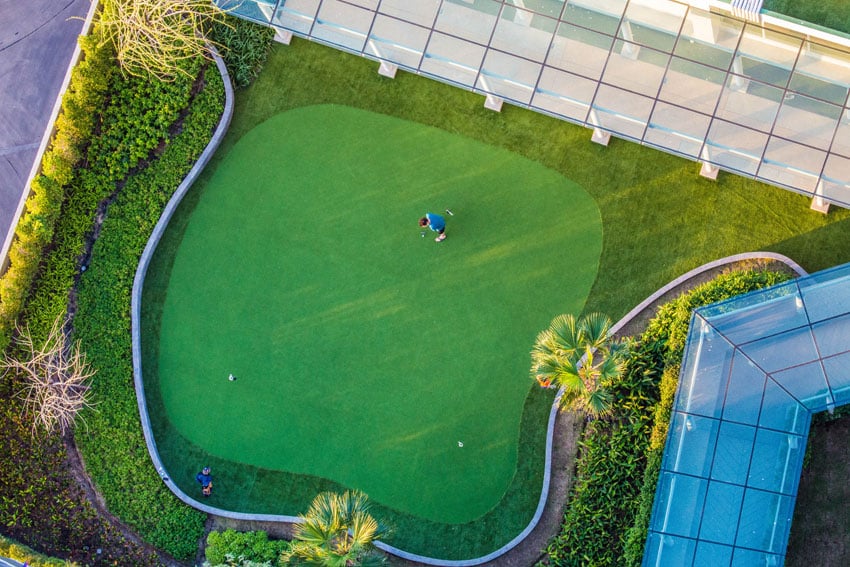
A clear aerial view of this simple yet effective two-hole backyard putting green shows that you don’t have to have a wildly eclectic design to have an effective backyard green. Incorporating such a straightforward design maximizes the space and keeps installation costs and labor relatively low.
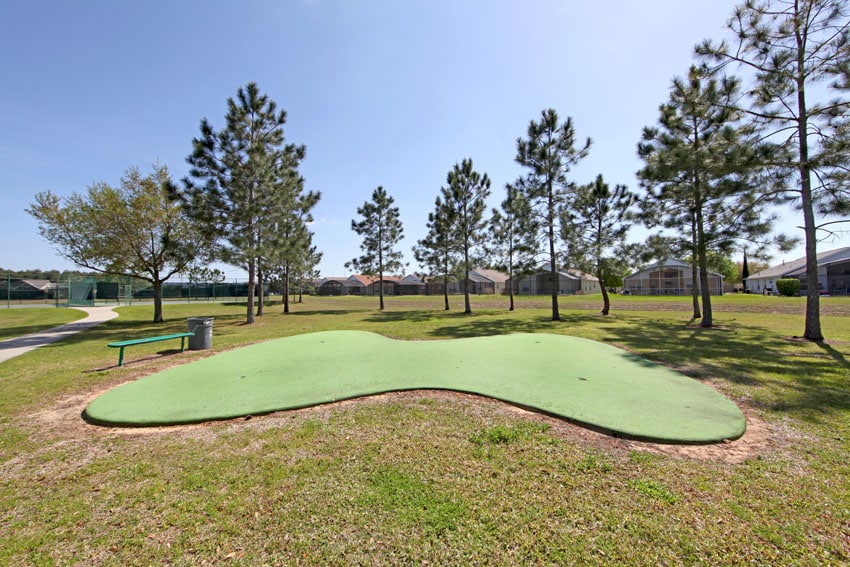
This outdoor putting green is incorporated into a public park and is well integrated into the park’s large open grass field. Public activity and communal interaction are encouraged in this type of landscaping design.
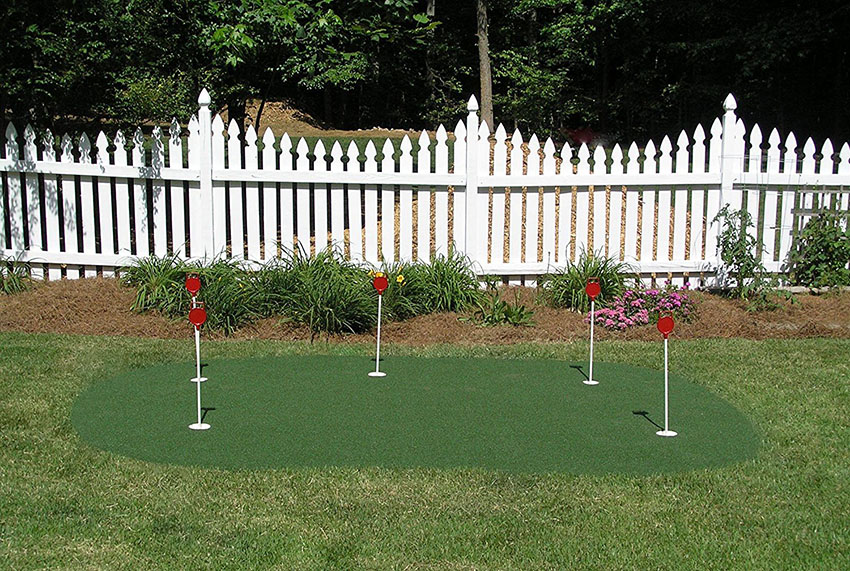
Not all putting greens are made large and sprawling – little ones such as this one are simple but serve their purpose well. These types of greens are ideal for small backyards or golfers who don’t want too much space taken from their landscaping. Click here to buy this putting green at (Sponsored) Amazon.
Related Home Design Gallery You May Like:

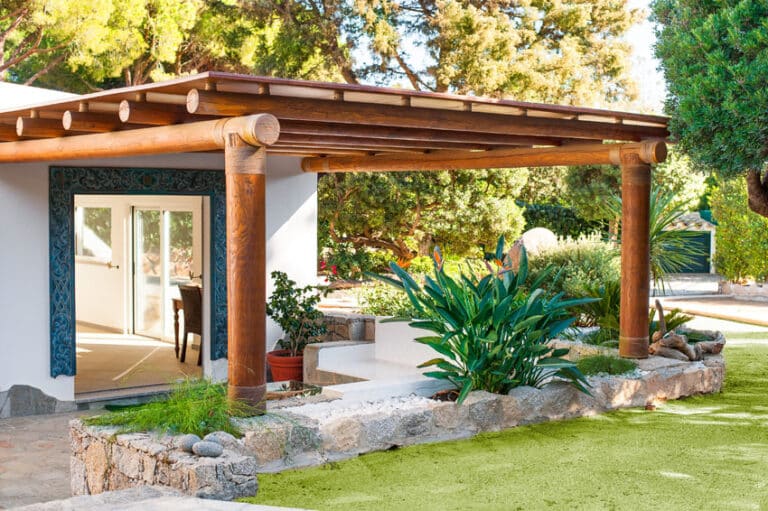
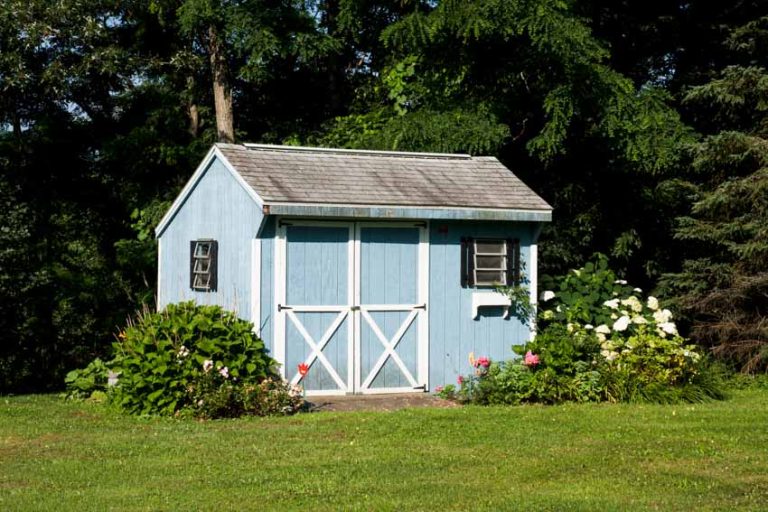
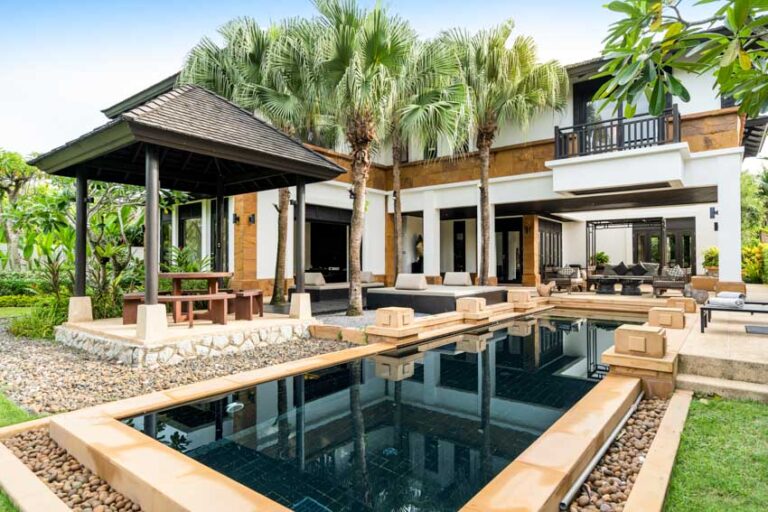
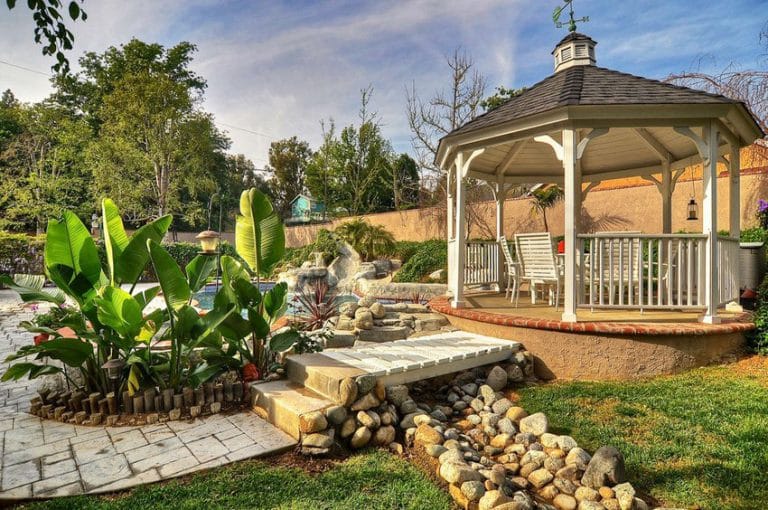
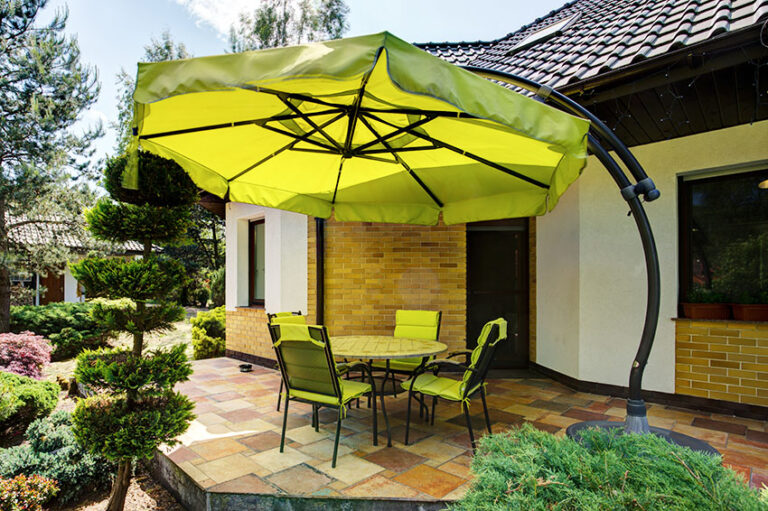
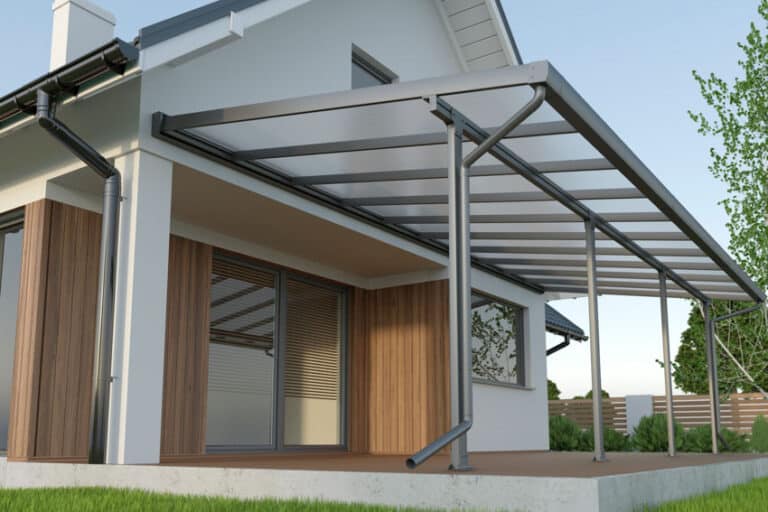
Hello, I am interested in placing an artificial turf putting green within my natural lawn but I live in Las Vegas and I am worried that the sprinkler overspray will turn the putting green white. is there a way to avoid this?
I’m not aware of a great way to avoid Artificial turf turning white from water or sunlight. The only thought I have is to try to adjust and limit any over spray as much as possible. I have heard of some experiencing black mold or staining which should be treated as quickly as possible. Stubborn stains can be removed with rubbing alcohol and water. Mold can be removed by mixing 1 part hydrogen peroxide and 10 parts water and applying it to the molded area, waiting 30 minutes and then rinsing. Pet urine stains and can be removed using soap and water. Pet urine smells can be removed using a spray mixture of 1 part white vinegar to 1 part water. Thank you for your interesting question. I will update this if I hear any more.